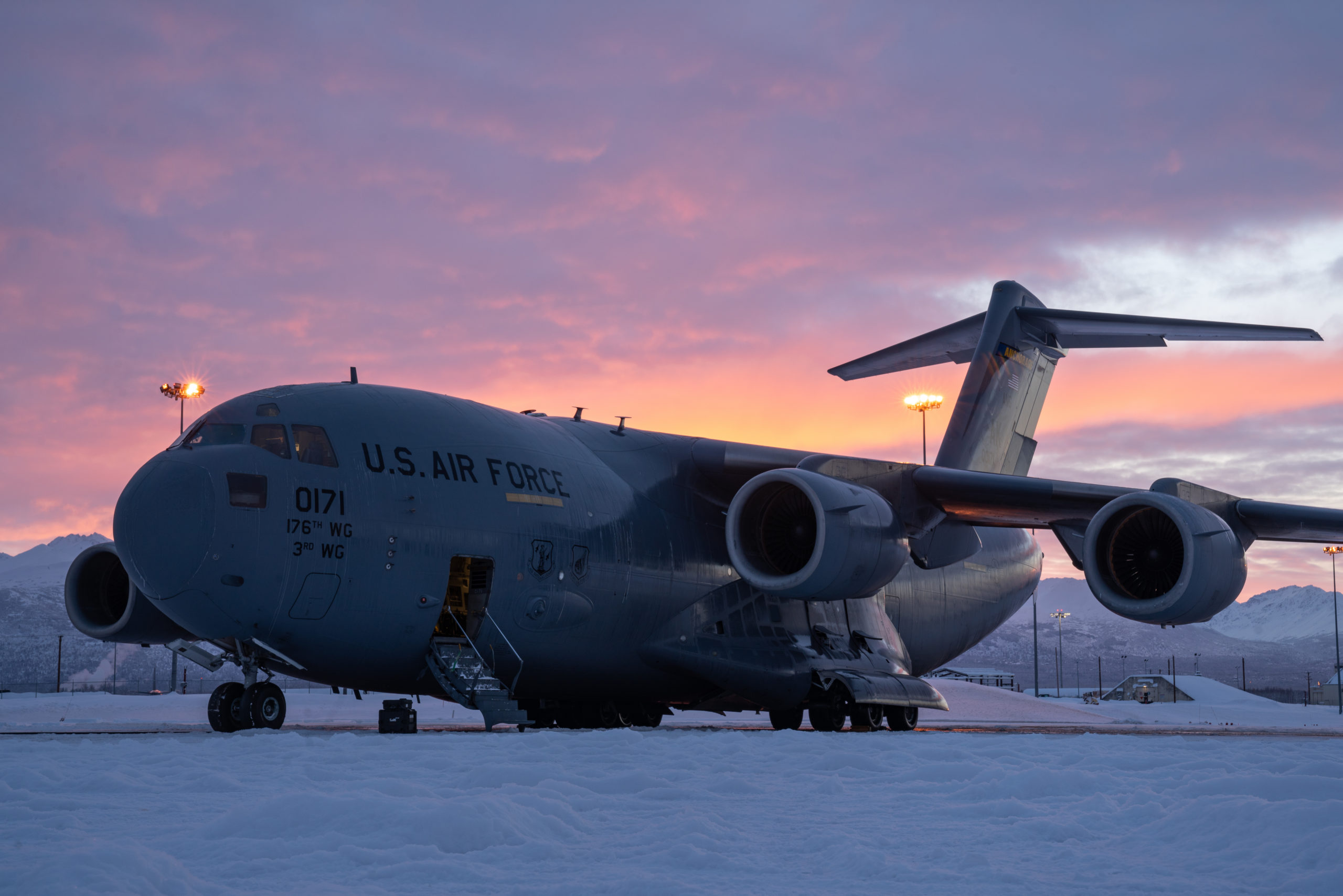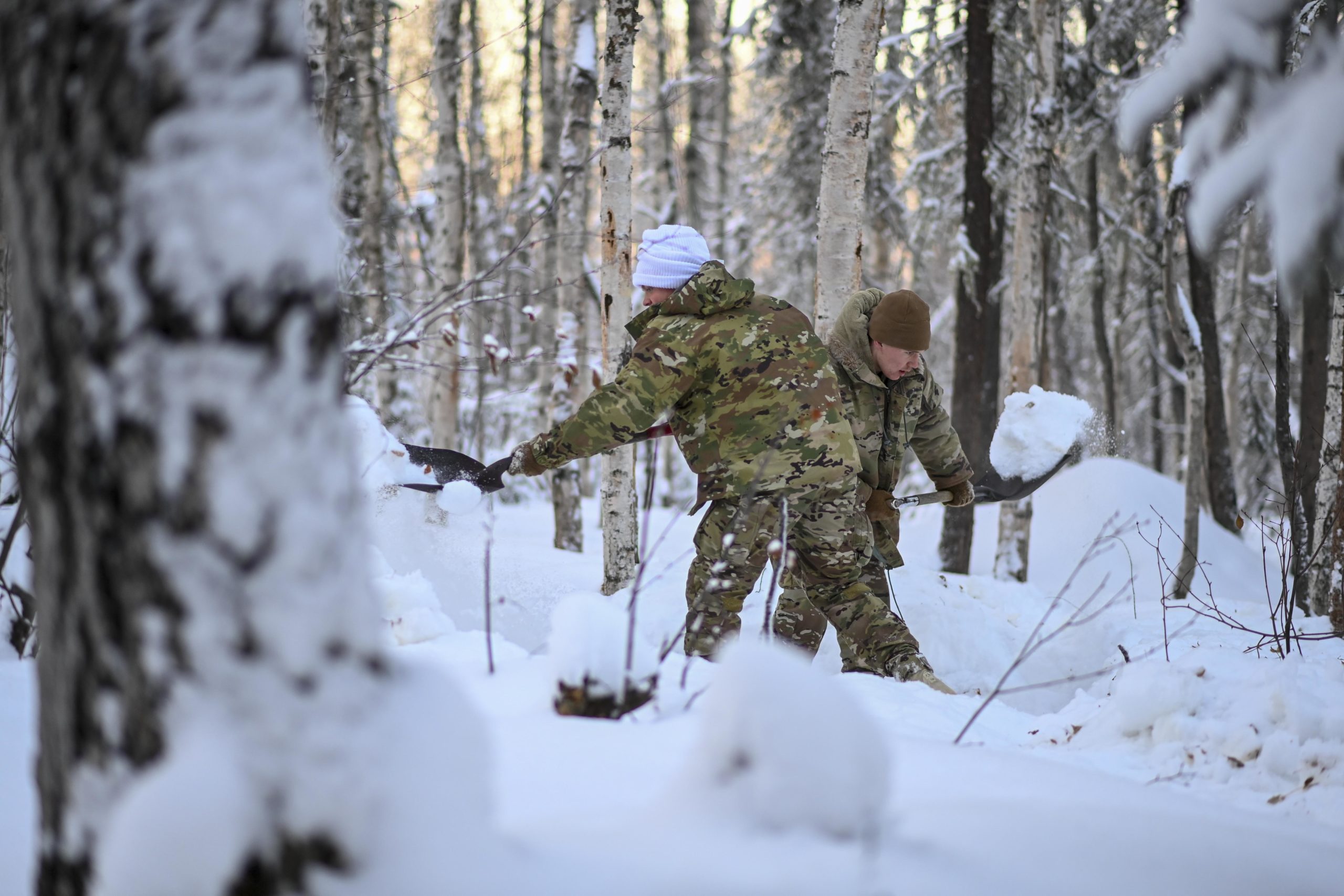What the new defense spending bill could mean for the Arctic
The largest-ever defense bill shows a stronger focus on hard security in the Arctic, experts said, but omits important environmental and diplomatic security measures.

The $768 billion defense spending bill that passed the U.S. Senate last week, has numerous Arctic-focused provisions, including an Arctic defense strategy, funding for new cold weather gear, and a National Guard Readiness Center in Alaska, among others.
That demonstrates a welcome commitment to the Arctic and the region’s importance in defense planning, experts told ArcticToday — but it also leaves out important environmental and diplomatic security measures in favor of a harder security focus.
Moreover, the continued emphasis on great power competitions could affect the Arctic’s exceptional status as a region of cooperation instead of conflict.
The bill will require the Defense Department to assess security in the Arctic and create a national defense strategy for the Arctic.
The legislation includes funding for cold weather clothing and equipment for Arctic troops, as was as combat rescue aircraft, a missile defense interceptor program and improved polar over-the-horizon radar capabilities.
It also funds a new Alaska National Guard Readiness Center on the Joint Base Elmendorf–Richardson and codifies into law the name, location, and establishment of the Ted Stevens Center for Arctic Security Studies in Anchorage.
[Anchorage will be home to the new US Arctic security center]
Wider Alaska provisions include mental health resources and suicide prevention among service members, particularly in rural and remote areas.
The Senate and House versions of the bill are now being reconciled before heading to the desk of President Joe Biden.
“The provisions included are important pieces of creating a more secure Arctic,” Sherri Goodman, former U.S. deputy undersecretary of defense and senior fellow at the Wilson Center’s Polar Institute, told ArcticToday in an email. “On balance, it’s moving in the right direction.”
She highlighted the importance of the new security assessment and the Stevens Center, as well as “solid” investments in equipment and high-latitude communications.

But she also pointed out what’s missing from the bill — including environmental and diplomatic security.
“It leaves out provisions on black carbon and methane emission reduction, which would also strengthen our security,” Goodman said.
Scrapping these environmental provisions was “disappointing,” Marisol Maddox, an Arctic analyst also at the Wilson Center’s Polar Institute, told ArcticToday in an email. “These short-lived climate pollutants contribute to amplification of climate change in the Arctic and reductions in these compounds would have almost immediate measurable benefits.”
[New US Arctic strategies ignore climate risks in focus on geopolitics, experts say]
The bill also dropped an Arctic Region Diplomacy Policy that was included in earlier drafts.
“The Arctic provisions of the NDAA further demonstrate the U.S. understands how geostrategically significant the Arctic is,” Maddox said. But the final version of the bill omitted a section that called for the prevention of escalating security tensions.
“Taken in conjunction with the omission of the Arctic Region Diplomacy Policy section, this demonstrates a harder security approach,” Maddox said, “which will need to be very carefully navigated.”
Any defense strategy in the Arctic needs to balance improved operational capability along with strengthened deterrence, Maddox said.
It’s still possible a diplomatic strategy could be folded into a proposed Arctic Security Initiative, Goodman said, “should the administration choose to do so.”
[A new bill aims to create the US’s first high-level Arctic diplomatic office]
The new security assessment is “crucial” for creating a more comprehensive approach to the Arctic, Maddox said.
“I’m pleased this bill supports my efforts to build out America’s leadership as an Arctic nation,” Sen. Lisa Murkowski, a Republican from Alaska, said in a statement.
Murkowski also highlighted the importance of a “force posture in the Indo-Pacific… to counter the growing aggression of Iran, Russia, and China.”
That conflation of the Arctic into the Indo-Pacific theater indicates that the Arctic may no longer be siloed from “other” strategic theaters, Elizabeth Buchanan, lecturer in strategic studies at Deakin University, told ArcticToday in an email.
“This no doubt makes defense appropriations in Washington more palatable,” she said. But after decades of concerted efforts to keep the Arctic “exceptional,” she said, “this is a change.”
But there may be more rhetoric than funding in the bill for countering China in the Arctic.
“These are largely inward domestic investments (cold weather gear) as opposed to offensive Arctic weapons systems,” Buchanan said.
“Radar and missile defense are unsurprising with the uptick in international activity in the Arctic, but I remain unconvinced armed conflict will eventuate in the region,” she said.
And an Arctic assessment led by the Defense Department could mean “we might finally get some consistency, clarity and viable U.S. Arctic security initiatives,” Buchanan said.
A more comprehensive Arctic strategy will also help coordinate the resources, such as the kinds of equipment necessary for operating in the Arctic — a long-awaited sign of defense investment in the North, said Troy Bouffard, director of the Center of Arctic Security and Resilience at the University of Alaska Fairbanks.
“This has been an issue for a very long time,” Bouffard told ArcticToday.
The kind of gear needed to complete Arctic missions was never technically required because the military services do not have a defined Arctic mission, he said. “Without that designation, there’s no requirement or mandate to provide resources to accomplish the missions.”
This funding indicates a move toward clearer national guidelines on security goals in the Arctic, Bouffard said. “That’s a game-changer.”
The new National Guard Readiness Center is also “a great development” that will help that force continue to conduct search-and-rescue missions and undertake national defense missions, Bouffard said.
“What the National Guard does in Alaska is phenomenal,” Bouffard said. “The Guard is as busy as, if not more than, their active-duty counterparts. And these kinds of provisions are sorely needed.”
Forces in the Arctic need to have adequate resources as national leaders develop plans for the region, Bouffard said.
“There’s a need at the national level to understand what is the role of the Arctic in homeland defense and our national security interests abroad, and that’s sometimes going to come with a lot more debate and take a long time to reach clarity,” Bouffard said. “Understanding the Arctic in terms of what are the threats and what do we need to do about that is anything but clear.”
“In the meantime, we have forces operating in the North,” he said, and “these kind of funding provisions are very helpful.”